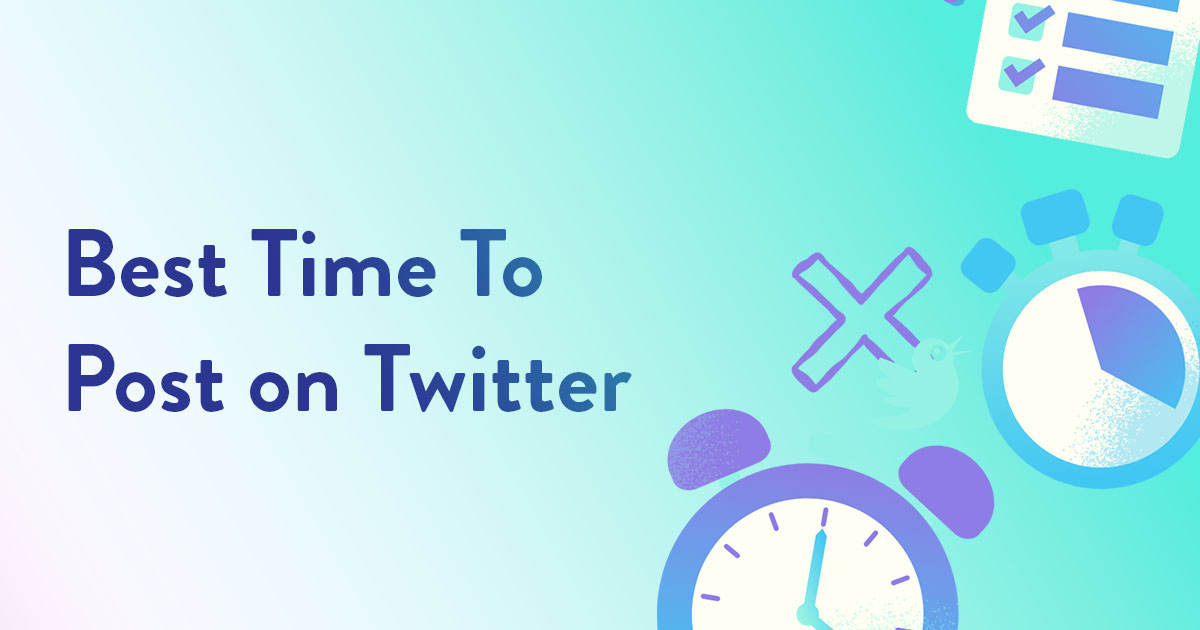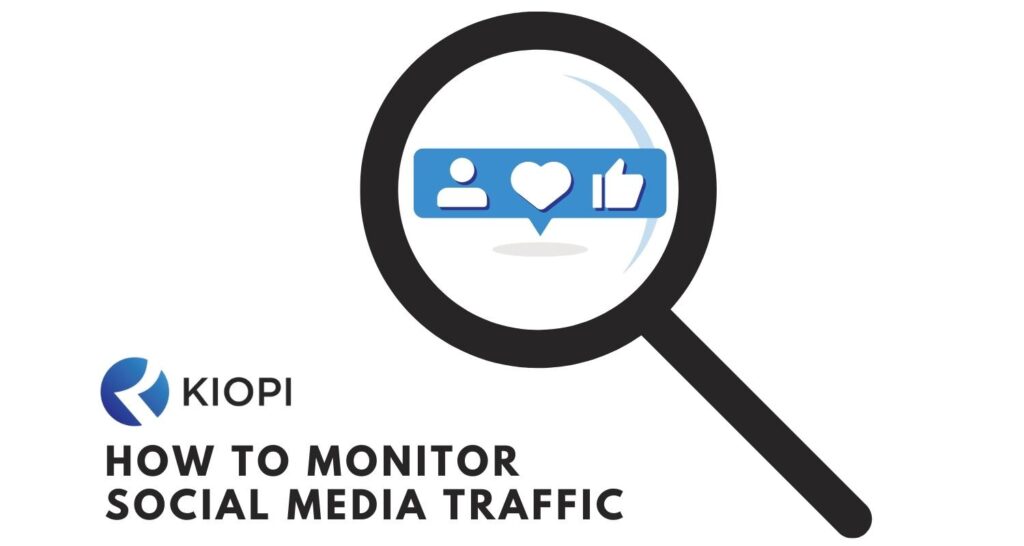
How To Monitor Social Media Traffic
lauryn preston
Table of Contents
In today’s socially-driven world, there are plenty of tools out there that make social networking easier and more profitable. Among these are social media monitoring tools, which are designed to assist you in identifying important social media conversations. Some of these programs allow you to keep track of many social media profiles across multiple platforms from a single location. Some even allow you to coordinate your social media efforts among collaborators and team members.
Luckily for you, Kiopi can do all this and much more.
Whether you’re a social media manager, an influencer, a small business owner, or you’re just beginning to take on outsourced social media marketing, you are sure to benefit from social media monitoring. But what exactly is it, and what can it do for your business and/or social media presence?
In this post, we’ll answer all these questions and teach you how to begin monitoring your own social media traffic.
What is Social Media Monitoring?
When you’re monitoring social media, you’re basically researching keywords, hashtags, and mentions that closely relate to your business through various social media marketing tools. Tracking social media in this way can give you inspiration for content and posts while also monitoring analytics/data.
Information You Can Get When You Track Social Media Data
Measuring social media efforts is the only way to know if your social traffic is increasing.
When you track things like social media traffic, posts, and keywords, you can get a plethora of information that you can use to create your own social media strategy. The better your social media strategy on specific social networks, the more driving traffic and potential customers you are likely to receive.
Tracking social media metrics and other data can reveal relevant information like:

Social Share of Voice
What percentage of social media posts and engagement is about your business instead of your competing businesses?
Social Sentiment
The specific mood behind social media posts and conversations.
Social Media Trends
What’s trending right now?
In other words, what is my target audience talking about, and how many people are talking about it? Different social media platforms can have different trends going on.
For instance, these trends could be anything from a trending Twitter hashtag, a trending small business hashtag, an aesthetic or style on Instagram, a meme on Facebook, or a sound on TikTok.
Social Return on Investment (SROI)
This is basically a financial measurement of how your monetary investments are paying off on a social media platform.
Social Media Keywords and Hashtags:
These can help you grow your business on social media sites by using the ones that are most relevant to you.
Because social media is ever-changing, the way we go about social media marketing is also ever-changing. That’s why it’s crucial to do your research on engagement metrics, trends, and so much more. The more you engage in relevant conversations with hashtags and keywords, the more your social traffic will grow, potentially leading to sales conversions and the overall growth of your business!
How to Begin Social Media Monitoring
Now that you know what kind of information you can receive when you track your social channels, it’s time to dive into how to begin tracking your social media traffic.
Step 1 - Choose the Best Social Media Monitoring Tool
While there are dozens of different social media manager tools out there, Kiopi is an incredibly useful tool that really does it all. We can track traffic, engagement, social media campaigns, and so much more.
Additionally, we can track all of that data on more social media platforms than just the big three (Facebook, Twitter, and Instagram). We also offer access to LinkedIn and Google My Business (GMB).
Check out our specific features to see more about how we can improve your social media marketing efforts.
Step 2 - Create Your Search Terms
The next step is paying attention to the search terms that people use on any given social network when talking about your business. Listed below are ideas on how to start compiling your search terms.
- The name of your company as a handle and a hashtag. For example, @Kiopi and #Kiopi
- Your company’s product names or features. For example: #ContentCalendar, #SocialMediaCampaignManagement, or #SocialMediaAnalytics
- The names of your company’s CEO, employees, team members, etc.
- Your company’s slogan or catchphrase, if applicable
- Your company’s branded hashtags
Make sure to research all the aforementioned data for your company’s competitors, as well. Once you’ve done that, move on to researching data for your industry. Listed below are ideas on how to do that.
- Your industry’s keywords and hashtags. For example, #SocialMediaMarketing
- Keywords and hashtags specific to your community
- Keywords and hashtags that are specific to the social media platform you’re using
- Hashtags and keywords that are specific to a location
Step 3 - Put Your Search Terms Into Social Media, Check Them Frequently, and Adjust
Next, put these terms into specific social media platforms and start tracking. Make sure to check back frequently to see if you need to adjust your search terms or do more research. As we’ve previously mentioned, social media and social media marketing are ever-changing. It’s a job that never really gets “done.” Trends change, website traffic fluctuates, and engagement metrics as a whole can be quite the roller coaster.
Monitoring social media channels and platforms is a full-time job that requires lots of adjusting and plenty of strategies.
Tips for Monitoring Your Social Media
When it comes to monitoring social media analytics, there’s a lot to learn. Listed below are more tips and tricks on how to get started and gain success.

Determine Reason For Tracking Social Media Metrics
Before you start tracking social analytics and various other data, you need to have a specific goal in mind.
Are you trying to reach different audiences? Are you trying to create and manage social media campaigns? Are you trying to monitor audience feedback? Are you trying to measure or increase how much traffic goes to your website or social media pages?
Of course, you can accomplish all these goals and more when utilizing social listening tools and social media management tools like Kiopi and tracking analytics. But regardless, it’s always good to have a few specific goals in mind when measuring social media efforts.
Monitor in Multiple Languages
If you’re really trying to grow your business, you’ll want to expand to more audiences than only those speaking the English language. Ideally, you’ll have customers or clients from all over who may speak a variety of other languages.
Social media is all about connection. If you don’t try to connect with your multilingual customers or clients in ways they understand, you may be seriously limiting your exposure and missing out on sending traffic and social media visitors to your page.
Additionally, if you don’t track data in other languages, you may lack connection as well. There’s always room to improve, and expanding connection through language is one way to do it.
Practice Social Listening
When you track social media traffic and data, it’s also important that you practice the skill of social listening.
Basically, if you don’t listen to what your audience likes and dislikes, you will struggle to connect and build your company online. Social listening is a term that refers to the analysis of conversations and trends on social media, not only about your company but about your entire industry.
This concept also involves using the knowledge gained from these studies to improve your social media marketing decisions in the future.
Here are some specific things to listen for:
- Positive and negative mentions about your company or brand
- Positive and negative mentions about your competitors
- Whether or not you’re reaching the audience that you want
- Changing trends in your industry
- Your customer’s conversations on social media
- Hashtags and keywords
Just like with social media measuring, you need to have a solid social media listening strategy, as well.
Learn more about social listening tools for business.
I Tracked my Social Media Analytics and Data – Now What?
So, you’ve tracked your social media traffic and you’re listening to what your audience has to say about your brand/industry… now what? Now, it’s time to use the information you’ve learned to your advantage.
With extensive knowledge of analytics, hashtags, keywords, and more, you can:
- Start working on the elements of a social media campaign
- Create partnerships with local businesses or influencers
- Adjust your messaging and make improvements based on negative comments from your audiences
- Create a solid content marketing plan
- Expand your company’s list of hashtags to raise more awareness about what you do
- Improve your company’s customer service
- Answer your customer’s questions directly and through a thorough FAQ page on your website
- Create a crisis plan in the event your analytics tank
- Set a solid social media posting schedule so you can get the most engagement at the best times of the day
- Interact with your customers
- Create more helpful links on your page
- Update your landing pages for the sake of more traffic
- Create more pages/awareness around content that’s receiving the most traffic
- Do more content experiments based on your research to see what kind of posts will perform well and which ones won’t
Monitor Your Social Media With Kiopi
If you’re on the hunt for the best software to track social media traffic and manage your accounts, you’ve come to the right place. Using Kiopi is the best way to grow your company, or even your own personal account, in this vast and dynamic online world.
Sign up for a free 14-day trial with Kiopi today and see how much easier social media management can be for you.

